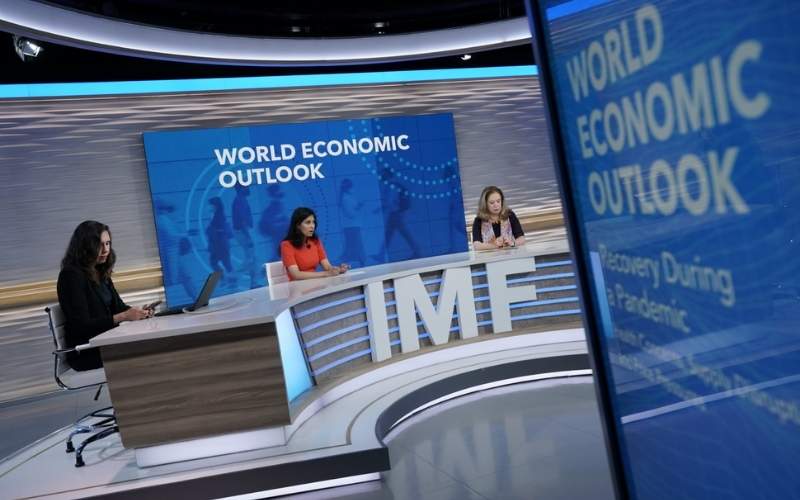
In our daily recap for today, October 12, we learn there's more behind the numbers in the World Economic Outlook; how COVID-19, crypto and climate change are fueling uncertainty around global financial stability; an effort to end the pandemic; and more.
The global recovery continues but momentum has weakened, hobbled by the pandemic, IMF Chief Economist Gita Gopinath writes in a new blog on the latest World Economic Outlook. Compared to our July forecast, the global growth projection for 2021 has been revised down marginally to 5.9% and is unchanged for 2022 at 4.9%. However, this modest headline revision masks large downgrades for some countries. The outlook for the low-income developing country group has darkened considerably due to worsening pandemic dynamics. The downgrade also reflects more difficult near-term prospects for the advanced economy group, in part due to supply disruptions. Get the background in the links below
Amid the prolonged and painful pandemic, risks to global financial stability have remained contained—so far. But with economic optimism fading, and with financial vulnerabilities intensifying, this is a time for careful policy calibration, IMF Financial Counsellor Tobias Adrian writes in a new blog on the release of the latest Global Financial Stability Report. Uncertainty is especially intense because of the persistent pandemic-stricken atmosphere where society confronts the challenges inherent in “the three Cs”: COVID-19, crypto, and climate change.

The heads of the IMF, World Bank Group, World Health Organization and World Trade Organization convened today to discuss accelerating global access to vaccines, therapeutics, and diagnostics, and how to measure this progress. Delivery of existing vaccine production is key to improving vaccine rates in areas of the world in need, particularly sub-Saharan Africa. All four organizations support a plan that would vaccinate at least 40% of the population in all countries by the end of 2021, but with rates in many countries still in the single digits, a challenge remains.

Ending this pandemic is in the interest of all countries, rich, poor or middle-income. So I am pushing, along with my colleagues from the IMF, World Bank and WTO, for at least 40% of the population to be vaccinated by the end of 2021 and 70% by the end of 2022.
DIRECTOR GENERAL OF THE WORLD HEALTH ORGANIZATION DR TEDROS ADHANOM GHABREYESUS

IMF Chief Economist Gita Gopinath and the authors of the October 2021 World Economic Outlook (WEO) present the latest economic forecasts.s and projections for the global economy.

At the GFSR Press Conference, IMF’s Natalucci noted that US debt limit discussion is not affecting financial markets much, but default would be catastrophic.

Managing Director Kristalina Georgieva and the heads of the World Bank, WHO, and WTO discuss the biggest hurdles to ending the pandemic.
The ‘great vaccine divide’ and large disparities in policy support are driving divergences between countries. While almost 60% of the population in advanced economies are fully vaccinated, about 96% in low-income countries remain unvaccinated.
Sign up to our special daily briefing to help guide you through our October 2021 Annual Meetings—pointing to all of the key publications, live events and more.

IIMF's Vitor Gaspar, Paolo Mauro, and Paulo Medas discuss the latest Fiscal Monitor.
Event Details
IMF Managing Director Kristalina Georgieva gives an overview of the global economy and institutional priorities ahead of the 2021 Annual Meetings and answers questions from the press.
Event Details
Climate change presents a major threat to the economic wellbeing of all countries. Ahead of COP26, this session focuses on policies to contain emissions, increase resilience to extreme climate events, and move toward a low-carbon economy.
Event Details